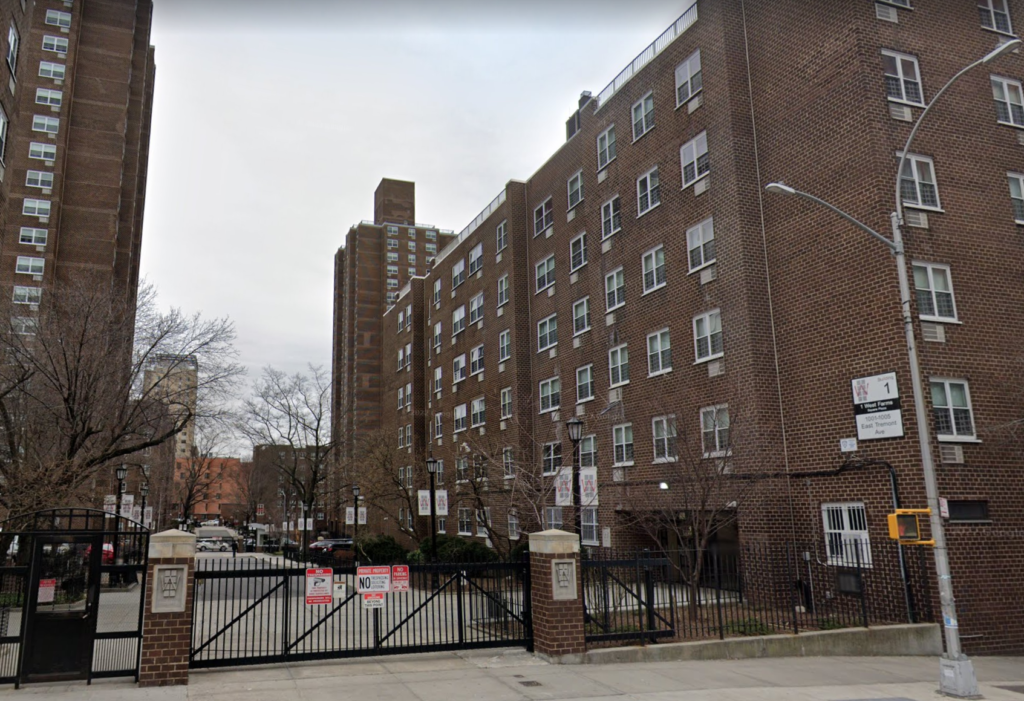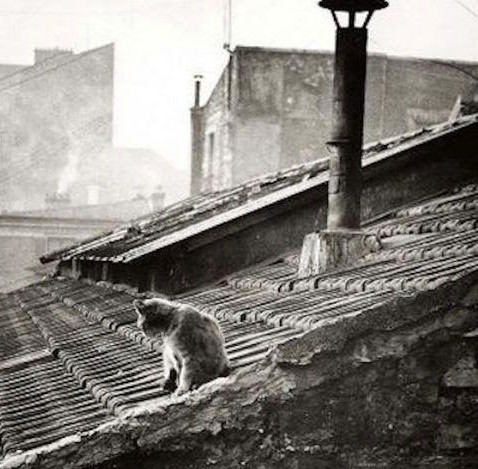
One of my favorite cat stories of Old New York is the amazing tale of Gittel, who lived in Manhattan’s Lower East Side with Louis Leichtman and his family at 163 East 4th Street. As soon as I came across this new story that took place in the West Farms section of the Bronx in 1944, I immediately thought of Gittel.
In 1908, Gittel was on the rooftop when she fell into an unfinished chimney that ran down to the basement. After trying many tricks to lure Gittel from the chimney, Louis resorted to lowering his own son Aaron down the chimney. Aaron got stuck halfway down the shaft, and some friends and neighbors had to help Louis pull him out.
I go into great detail about this attempted rescue in my book, The Cat Men of Gotham, complete with a dialog between father and son that always makes me laugh, even though what Louis did to his son would of course be considered child abuse today. I never thought anyone else would ever try something so absurd and dangerous.
I was wrong.
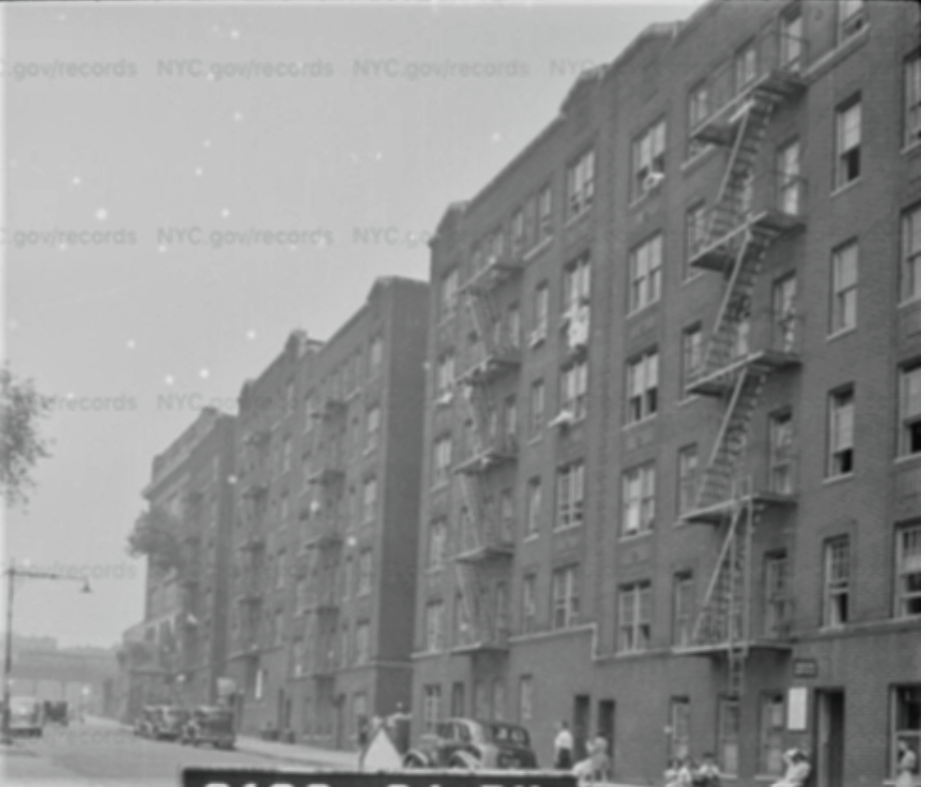
In April 1944, an unnamed cat fell down the chimney of a six-story apartment building at 1973 Bryant Avenue in West Farms. For four days and nights, Rose Colgan, who lived on the first floor, listened to the poor cat cry behind a wall in her department. It took four days, but she finally decided to take action.
Colgan notified William Setzer, the superintendent of the building, and demanded he do something to rescue the cat (or at least put an end to its meowing). William called on his nephew, 10-year-old Charles Setzer, to help him out.
According to the New York Times, William tied a rope around Charles and lowered him down. The young boy got about 10 feet down when “his cries drowned out those of the cat.” He was stuck, too. It took William about a half hour to free the frightened child from the chimney.
Just as SPCA Superintendent Thomas Freel did to rescue Gittel in 1908, the ASPCA agent who responded to William’s urgent call for help broke through the wall to rescue the cat. Using milk, meat, and catnap, he coaxed the kitty out and into Rose Colgan’s apartment.
The cat was taken to the Bronx ASPCA headquarters. I have a feeling Child Protective Services was not summoned to reprimand William for putting his nephew in danger.
A Brief History of Bryant Avenue, West Farms
What is now Bryant Avenue in West Farms was once part of the early 18th-century Theophilus Hunt farm (aka West Farms Lot 4) in what was then called Westchester (or West Chester) County. The Hunt family history in Westchester goes back to the mid-1600s, but it was Theophilus Hunt who once owned the specific land where this story of the chimney cat took place four hundred years later.
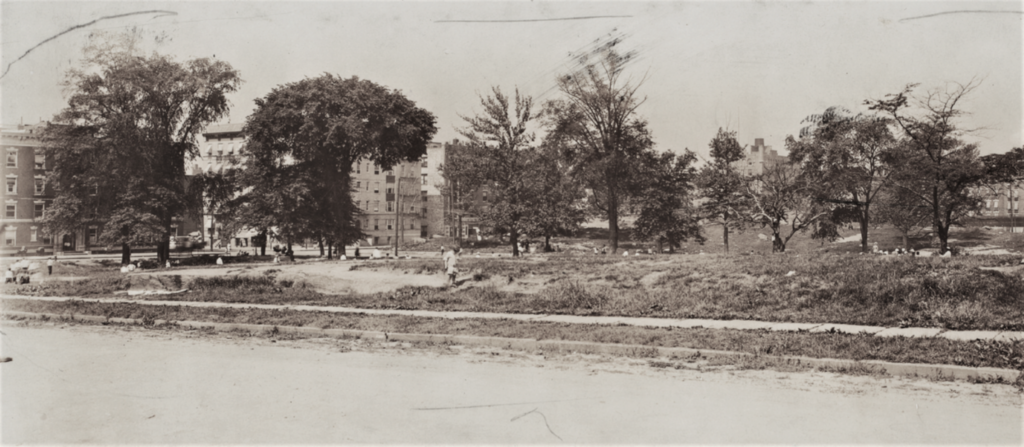
Hunt’s farmhouse stood near present-day East 174th Street and an old trail called Hunts Point Road (today’s West Farms Road), where the East 174th Bridge crosses the Bronx River. Hunt, who was born in Westchester sometime between 1723 and 1725, died in West Farms in 1797.
Just a few blocks north of the Hunt homestead was the home of John Embree, who resided with his father, Samuel, in a home near present-day East Tremont and Bryant Avenues from about 1718 to his death in 1785. The Embree home was situated behind twin elm trees, once described as two of the most magnificent elms in all of Westchester County.
By 1940, this property would be the site of the six-story apartment building at 1973 Bryant Avenue, where Rose Colgan lived.
Following John Embree’s death, the property was purchased by a Westchester doctor named Joseph Browne. Dr. Browne tore down the Embree farmhouse and replaced it with a two-story frame dwelling with wide verandas overlooking the Bronx River Valley. (In 1798, Dr. Browne suggested diverting the main stream of the Bronx River to New York to supply the city with fresh clean water; his proposal was rejected.)
Dr. Browne and his family lived in this home–which was a summer country home–until 1812, which is when Thomas Walker moved in.
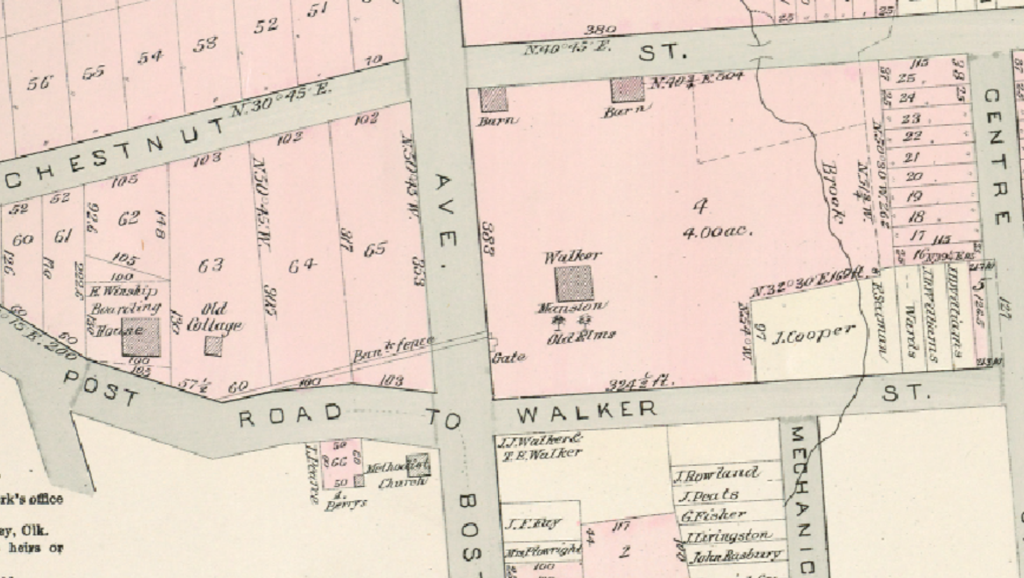
Thomas Walker was a wealthy Quaker merchant and manufacturer. He took over the old farm, which stretched westward along the north side of Tremont Avenue (then called Locust Street) from today’s West Farms Square to Prospect Avenue.
Walker had two mills on the property just north of the house, which were powered by a water-wheel at present-day 178th Street and Bryant Avenue. The wheel was fed from a mill pond called “The Dyke,” which was west of his farm near present-day Southern Boulevard.
Thomas Walker also owned a tract of land along both the east and west sides of West Farms Road between about East 174th and 176th Streets. He subdivided this land into lots to form “Boat Town”: his idea was that seamen could purchase lots on both sides of the road. Those on the west side would have homes and gardens, while the eastern lots would provide wharf access to the river.
These lots were laid out from 1833 to 1836, and development began soon after this period.
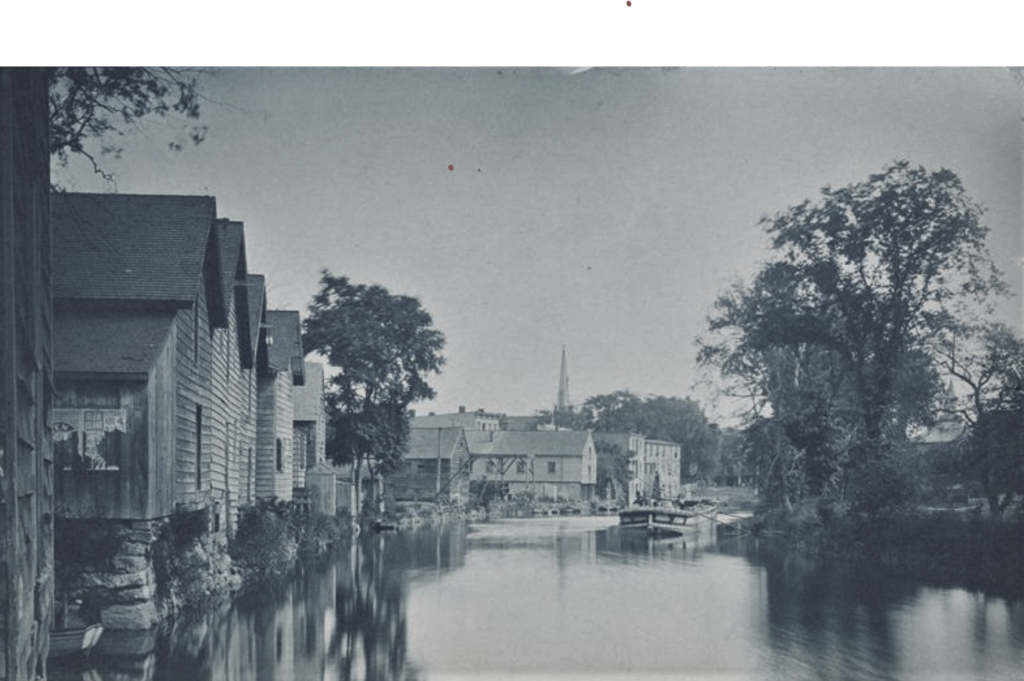
Sometime around 1850, the old homestead was purchased by Mr. Frederick Larner, who opened a hotel called the Adriatic Hotel. The hotel featured fine gardens and grounds, and local organizations often rented the property for outdoor events.
Frederick Larner was killed instantly in September 1872; he was reportedly thrown from his carriage after his horse became spooked by a cow.
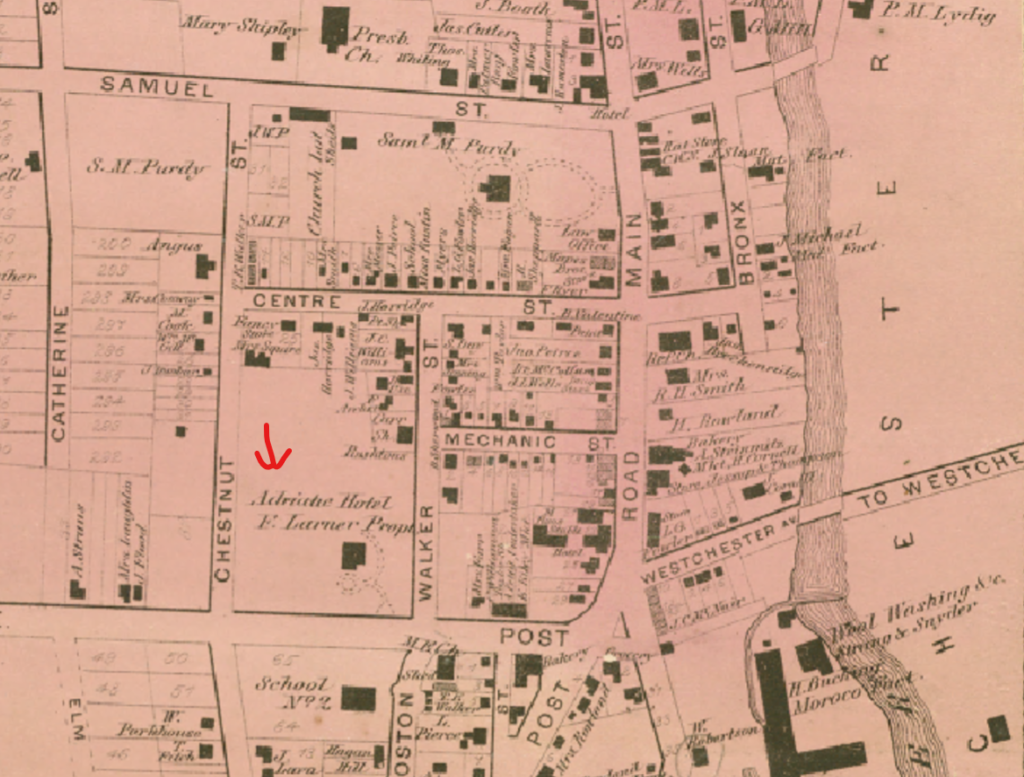
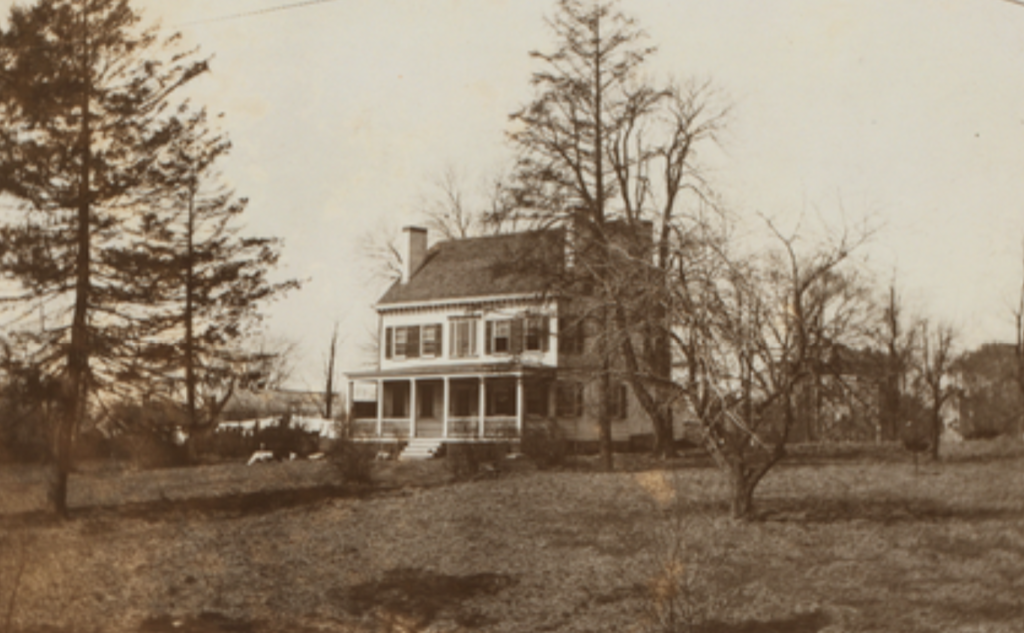
The Adriatic Hotel was torn down in 1892. The barns on the property had been taken down many years prior to this, leaving a vacant lot for many years until about 1930, when a cluster of six-story brick apartment buildings surrounding a central courtyard were constructed on the lot.
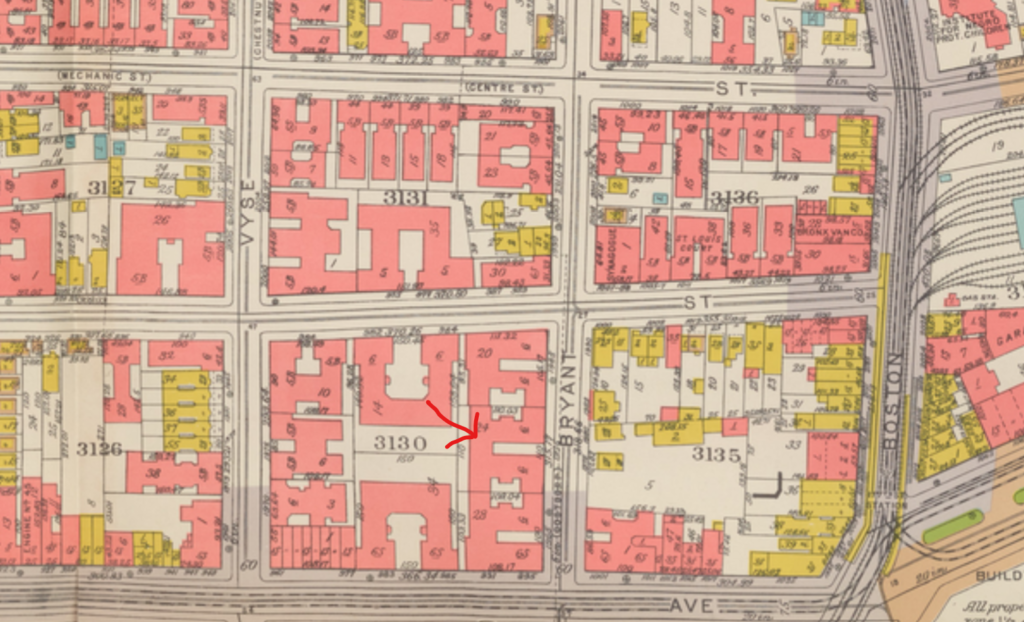
In the early 1970s, the apartments where this cat rescue took place were demolished to make way for West Farms Square, an affordable housing development which consists of eight buildings and 526 units. They do not appear to have any chimneys.
